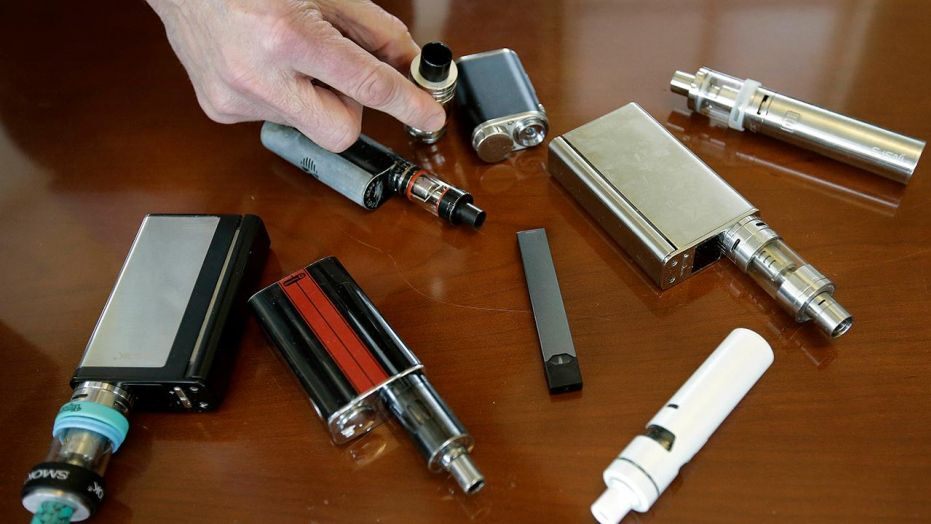
Lung injuries and deaths linked to the use of e-cigarettes and vaping products has continued to rise in the US. The CDC has confirmed 2,290 vaping related lung injury cases and 47 deaths reported as of November 21st, 2019. Cases have been reported in all states except Alaska, along with the District of Columbia and two U.S. territories. Deaths have been confirmed in 25 states and Washington D.C., with more being investigated. Those affected by these illnesses range in age from 13 to 75 years old.
CDC data shows on 514 patients, about 77% reported using THC-containing products in the 30 days prior to the start of their symptoms. However, 16% reported using only nicotine-containing products. The illness is marked by chest pain, shortness of breath and vomiting, and it has largely affected young people. The vast majority of cases, almost 80%, involve e-cigarette users younger than 35, and another 15% are younger than 18.
While the investigation into the cause is still ongoing, the CDC has uncovered a potential cause- vitamin E acetate. Samples taken from the lungs of 29 people with e-cigarette, or vaping, product use associated lung injury or (EVALI) all contained vitamin E acetate. The CDC has also expanded its laboratory testing to include lung fluid, blood, and urine samples from patients, as well as lung biopsy and autopsy specimens.
Vitamin E acetate is commonly used in ingested supplements or skin care, and in those cases appears to be safe. Dr. Anne Schuchat, principal deputy director of the CDC said previous research has found that when vitamin E acetate is inhaled, it may interfere with normal lung function. She said they are no longer seeing such a dramatic rise in EVALI cases as earlier this fall but that some states are still investigating potential cases.
The agency continues to work with the Food and Drug Administration (FDA), states, and health providers to track and investigate this outbreak. The agency is also testing the vapor of e-cigarette products that have been involved in these cases to look for potentially harmful compounds. While it appears that vitamin E acetate is associated with EVALI, evidence is not yet sufficient to rule out contribution of other chemicals of concern to EVALI. Many different substances and product sources are still under investigation, and it may be that there is more than one cause of this outbreak.
EVALI looks and sounds like pneumonia. Symptoms include chest pain, shortness of breath, fever, nausea and vomiting. But it’s not an infection. The antibiotics used to clear up pneumonia don’t help the vaping illness and without knowing if a patient vapes-doctors might pursue the wrong treatment or miss the chance to encourage the person to stop. The CDC reports that some early patients with the illness who have been out of the hospital for several weeks have begun receiving follow-up care. Doctors are reporting that patients’ recoveries have varied, with some patients appearing to make full recoveries and others continuing to have trouble breathing. CDC reported that some patients have relapsed and had to be hospitalized a second time, with readmissions occurring from as few as five days to as many as 55 days after initial discharge.
E-cigarette manufacturers have advertised their products as a better option for adult smokers who are already hooked on nicotine. For thousands of young people who have never smoked, however, vaping plays the opposite role: It establishes a nicotine addiction that will ultimately lead to cigarette smoking.
Read more

A 50-year-old Kansas woman became the sixth person in the USA to die of a vaping-related lung illness, an outbreak that has ramped up health concerns nationwide. Kansas State Epidemiologist Farah Ahmed said in a statement that the unidentified patient had a history of underlying health issues and had been hospitalized with symptoms that progressed rapidly. Dr. Lee Norman, secretary of the Kansas Department of Health and Environment said that the patient did have underlying health issues but nothing that would have foretold the fact that within a week after starting using e-cigarettes for the first time, she developed full-blown acute respiratory distress. Doctors say it’s clear the vaping related lung illness is responsible for her rapid deterioration.
Kansas health officials noted six more cases associated with the outbreak, three patients confirmed with the illness and three cases under investigation. Five previous vaping-related deaths were confirmed in California, Illinois, Indiana, Minnesota and Oregon. After the Kansas fatality, the Centers for Disease Control and Prevention tallied six deaths and more than 450 possible cases of severe lung injury in 33 states and one jurisdiction. The CDC confirmed that investigators narrowed their focus and that the additive vitamin E acetate is a chemical involved in many of the cases, but officials emphasized it is not in all of the cases being reviewed.
People with a history of vaping who experience lung injury symptoms should seek medical care, according to Kansas health officials. Nationally, symptoms include shortness of breath, fever, cough, vomiting and diarrhea. Other symptoms reported by some patients include headache, dizziness and chest pain. Though many patients across the nation have been in their late teens, 20s or 30s, the Kansas death is a warning that older adults may be at particular risk.
Patients tend to arrive at the hospital short of breath and coughing. Many have also had fevers, general fatigue and gastrointestinal problems. It is not unusual for patients to be put into intensive care units, and on ventilators. All reported vaping nicotine, THC or a combination of the two in the days and weeks before falling ill. The CDC has recommended people stay away from vaping devices while investigators work to pinpoint exactly what’s behind the illnesses.
The rapid and worrisome increase has now prompted a Congressional hearing on the matter, after a policy discussion on the matter. The recent death has prompted the U.S. President to call for a ban on thousands of e-cigarette flavors in an effort to get people to give up e-cigarettes. E-cigarette companies have been given years to gather and submit evidence their products are safe and effective ways to quit smoking traditional tobacco. A federal judge has set a May 2020 deadline for companies to do so.
Dr. Norman said “God only knows what all is in there. There should be a moratorium on the sale of these products until we know more.” The American Lung Association also released a statement warning the public that e-cigarettes could cause irreversible lung damage. “No one should use e-cigarettes or any other tobacco product,” Harold Wimmer, national president of the American Lung Association, wrote in the statement. “This message is even more urgent today following the increasing reports of vaping-related illnesses and deaths nationwide.”
Read more

Five deaths in the US have been linked to vaping as health officials continue to grapple with the dangers of e-cigarette use and the exact cause of the deaths. All five died after developing a severe lung illness that is believed to be linked to vaping. The exact cause of the deaths and the dangers of vaping still remain unclear but are being investigated on both the federal and state level.
More than 450 possible cases of respiratory illnesses have been reported in 33 states after use of e-cigarette products, according to the Centers for Disease Control and Prevention. The average age of those with the illness is 19, which is not surprising considering of the almost 10 million vapers in the US, nearly half of those are under 35, with 18-24-year-olds the most regular users.
Those who have suffered from the lung illness reported experiencing coughing, chest pain or shortness of breath before their health deteriorated to the point of respiratory failure and they needed to be hospitalized, according to the Centers for Disease Control and Prevention. Respiratory failure is where your body either can’t break down oxygen, produce carbon dioxide, or both. The result is that your lungs stop working and breathing becomes difficult. Other reported symptoms include nausea, vomiting, diarrhea, fatigue, fever and weight loss. Many victims have ended up with acute respiratory distress syndrome, a life-threatening condition in which fluid builds up in the lungs and prevents the oxygen people’s bodies need to function from circulating in the bloodstream.
Those affected used a number of different devices from vaporizers to smaller e-cigarettes and a variety of different brands of liquids and cartridges. Health officials recently said many cases involved products that contained THC, the mind-altering substance in marijuana. The FDA has now collected over 120 samples to test for different chemicals, including nicotine, cannabinoids, additives and pesticides.
They also recently identified a common contaminant in some of the cannabis products used by patients across the country — an oil derived from vitamin E. It remains unclear whether this is the cause or one of the causes of the illnesses. The Centers for Disease Control and Prevention issued a statement that advised against using electronic cigarettes while it investigates the issue. The agency also said people should stop buying vaporizers, cartridges and liquids off the street or modifying vaping products bought legally.
New York Health officials have focusing their investigation on Vitamin E acetate after they found high levels of it in nearly all of the cannabis-containing vapes tested. At least one vape containing both cannabis and vitamin E has been linked to every patient who submitted products for testing, the New York health department said. Vitamin E isn’t known to be harmful if ingested as a vitamin supplement, but it could be dangerous if inhaled because of its “oil-like” properties. It has not been approved as an additive for New York’s medical marijuana program.
Federal health officials are warning that vitamin E is likely only one piece of the puzzle. The CDC is running its own tests on more than 100 samples for vitamin E, pesticides, opioids, poisons and other toxins. “No one substance or compound, including vitamin E acetate, has been identified in all the samples tested,” Zeller said. “The samples we’re continuing to evaluate show a mix of results.”
Read more
 A patient in Illinois is believed to be the first death linked to vaping. Health officials said the patient died after contracting a severe respiratory illness, but did not give details about what the patient was vaping or which device was used. They did not provide details about the patient’s identity, saying only that the person was an adult who had vaped recently and then succumbed to a severe respiratory illness.
A patient in Illinois is believed to be the first death linked to vaping. Health officials said the patient died after contracting a severe respiratory illness, but did not give details about what the patient was vaping or which device was used. They did not provide details about the patient’s identity, saying only that the person was an adult who had vaped recently and then succumbed to a severe respiratory illness.
This comes as the Centers for Disease Control and Prevention has identified nearly 200 possible cases of lung disease linked to vaping in at least 22 states, including 22 cases in Illinois. The Illinois patients range in age from 17 to 38. Illinois state officials are working with local health departments to investigate another 12 individuals. Officials said earlier this week that many patients, most of whom were adolescents or young adults, had described difficulty breathing, chest pain, vomiting and fatigue. The most seriously ill patients have had extensive lung damage that required treatment with oxygen and days on a ventilator. Some are expected to have permanent lung damage.
Many patients have acknowledged vaping of tetrahydrocannabinol, or (T.H.C.), the high-inducing chemical in marijuana, according to statements from federal and state health agencies. Officials still don’t know whether the ailments have been caused by marijuana-type products, e-cigarettes, or some type of street concoction that was vaped, or whether a contaminant or defective device may have been involved.
The F.D.A. does not regulate what ingredients are used in vaping devices. The e-cigarette market has broadened to counterfeiters and a range of devices that can be packed with different substances, including marijuana, but also various flavors and concoctions that may be mixed inexpertly. Some speculate that people are emptying out commercial nicotine pods and filling them up with a combination of T.H.C. oil and other chemicals. Cannabis liquids and oils have become more widely available online and in many stores. The ingredients may not be disclosed at all so unsuspecting consumers may be exposed to a cocktail of hazardous chemicals.
State health departments are handling most investigations into the respiratory illnesses. So far, public health officials have declined to say if they are seeing a pattern that would make clear whether the problematic products are made by mass-market companies or counterfeiters, or whether the inhalants involved are standard to many vaping products or made or mixed by consumers themselves. Even though cases appear similar, it is not clear whether all these cases have a common cause or whether they are different diseases with similar symptoms.
Dozens of young people with an unidentified lung illness have been hospitalized around the country in recent weeks. It’s unclear if the condition is linked to the vaping devices or what the patients were smoking before they became sick. A recent study says that e-cigarettes impact people’s blood vessels after a single use. Officials said they don’t know why a surge of illnesses is surfacing now since various forms of the battery-powered e-cigarette devices have existed for more than a decade. E-cigarettes have grown in popularity over the past decade despite little research on their long-term effects. Millions of Americans use e-cigarettes, with the greatest use among young adults. Lat year, more than 3.6 million U.S. middle and high school students said they had used e-cigarettes in the past 30 days, according to the CDC.
Read more




 A patient in Illinois is believed to be the first death linked to vaping. Health officials said the patient died after contracting a severe respiratory illness, but did not give details about what the patient was vaping or which device was used. They did not provide details about the patient’s identity, saying only that the person was an adult who had vaped recently and then succumbed to a severe respiratory illness.
A patient in Illinois is believed to be the first death linked to vaping. Health officials said the patient died after contracting a severe respiratory illness, but did not give details about what the patient was vaping or which device was used. They did not provide details about the patient’s identity, saying only that the person was an adult who had vaped recently and then succumbed to a severe respiratory illness.
